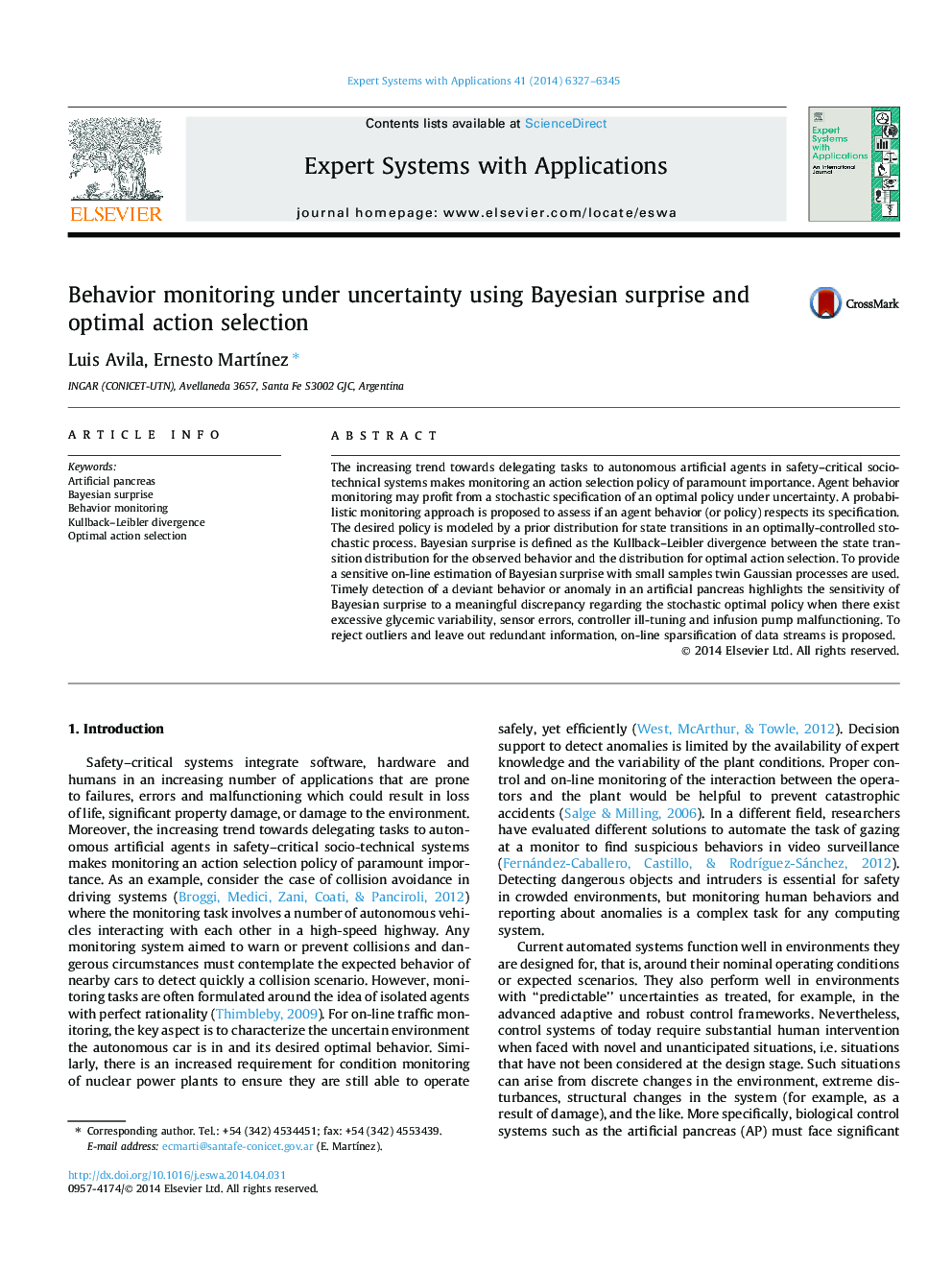| کد مقاله | کد نشریه | سال انتشار | مقاله انگلیسی | نسخه تمام متن |
|---|---|---|---|---|
| 383640 | 660828 | 2014 | 19 صفحه PDF | دانلود رایگان |
• A probabilistic characterization is used as a specification for the desired behavior.
• A Bayesian surprise metric is defined for on-line monitoring of an action selection policy.
• Sparsification of data streams is used to reject outliers and leave out redundant information.
• Timely detection of performance degradation in an artificial pancreas is demonstrated.
The increasing trend towards delegating tasks to autonomous artificial agents in safety–critical socio-technical systems makes monitoring an action selection policy of paramount importance. Agent behavior monitoring may profit from a stochastic specification of an optimal policy under uncertainty. A probabilistic monitoring approach is proposed to assess if an agent behavior (or policy) respects its specification. The desired policy is modeled by a prior distribution for state transitions in an optimally-controlled stochastic process. Bayesian surprise is defined as the Kullback–Leibler divergence between the state transition distribution for the observed behavior and the distribution for optimal action selection. To provide a sensitive on-line estimation of Bayesian surprise with small samples twin Gaussian processes are used. Timely detection of a deviant behavior or anomaly in an artificial pancreas highlights the sensitivity of Bayesian surprise to a meaningful discrepancy regarding the stochastic optimal policy when there exist excessive glycemic variability, sensor errors, controller ill-tuning and infusion pump malfunctioning. To reject outliers and leave out redundant information, on-line sparsification of data streams is proposed.
Journal: Expert Systems with Applications - Volume 41, Issue 14, 15 October 2014, Pages 6327–6345
